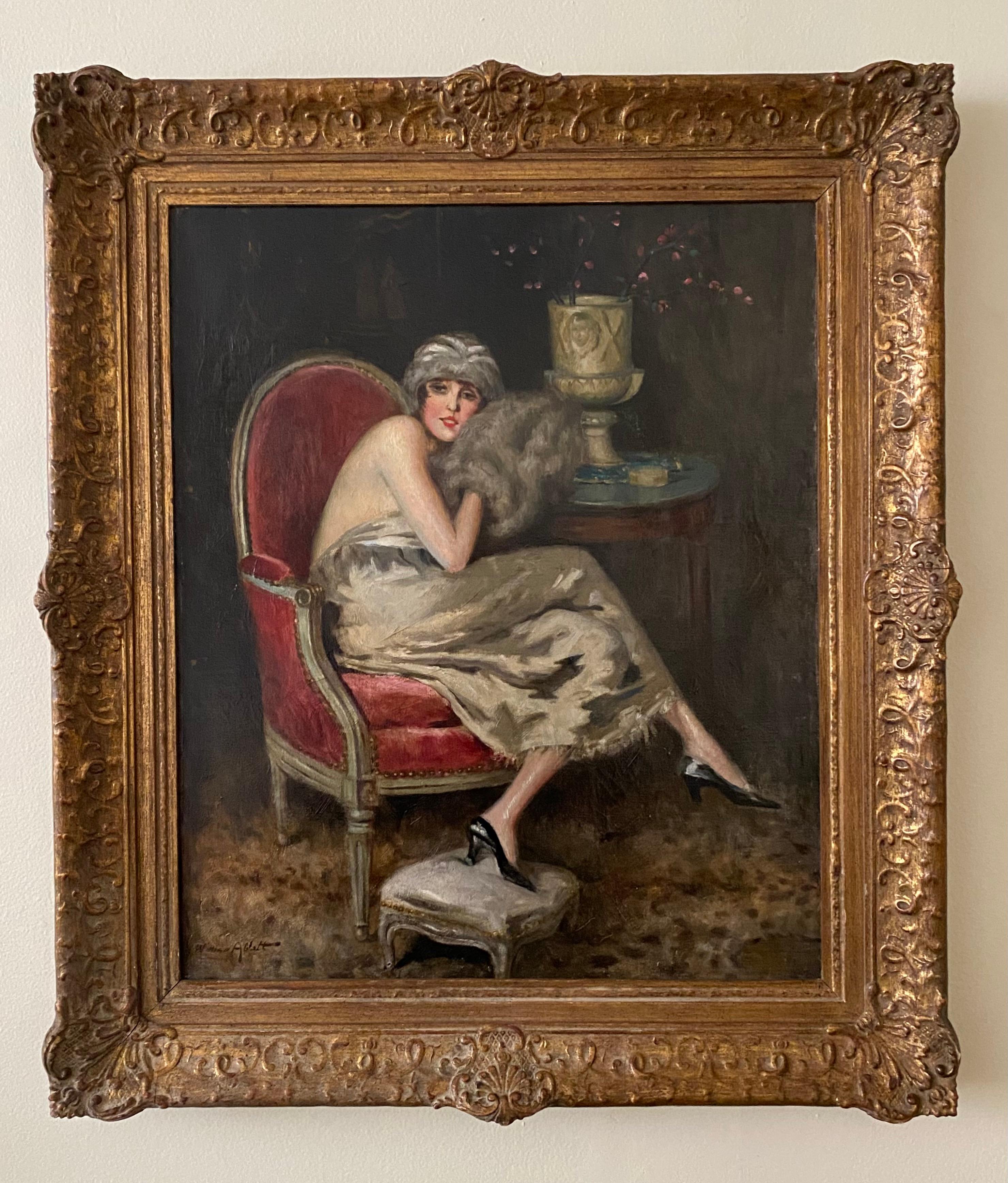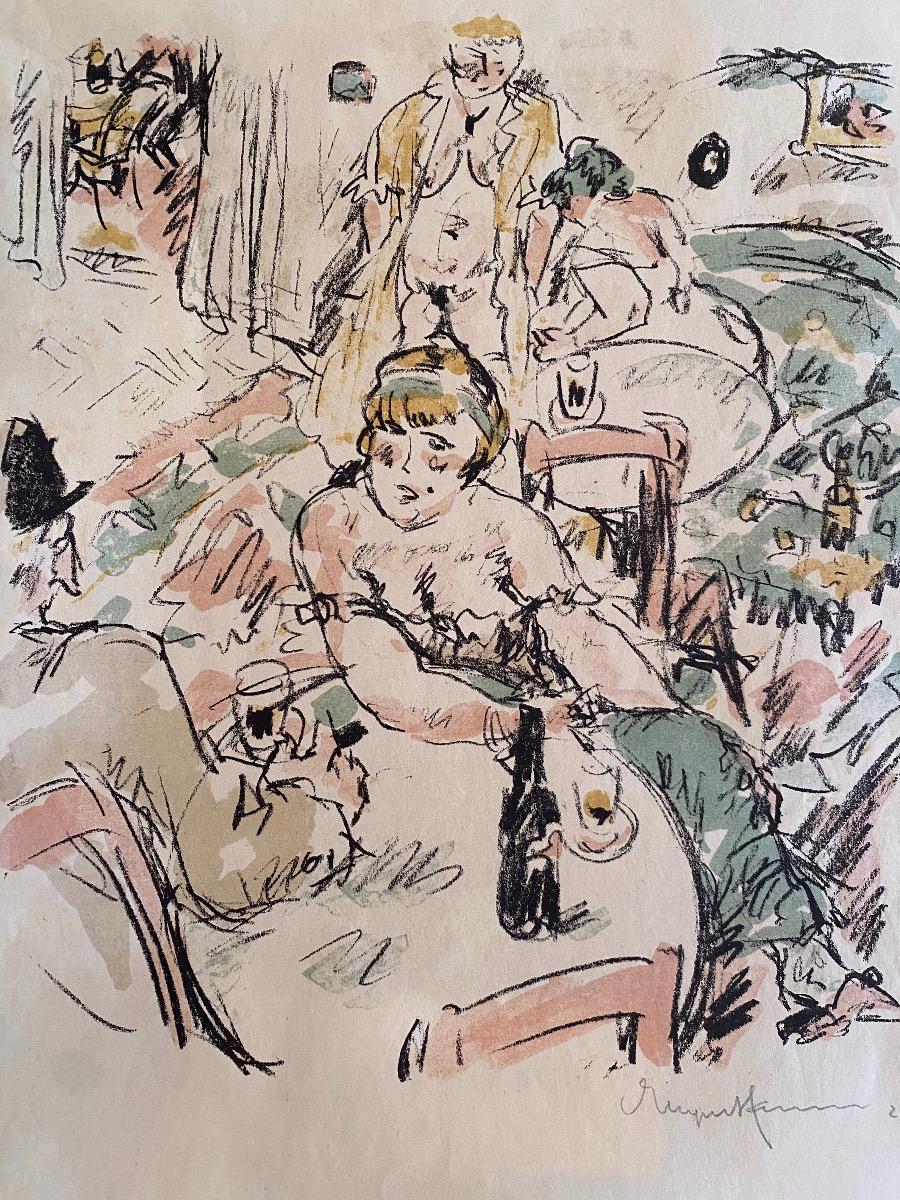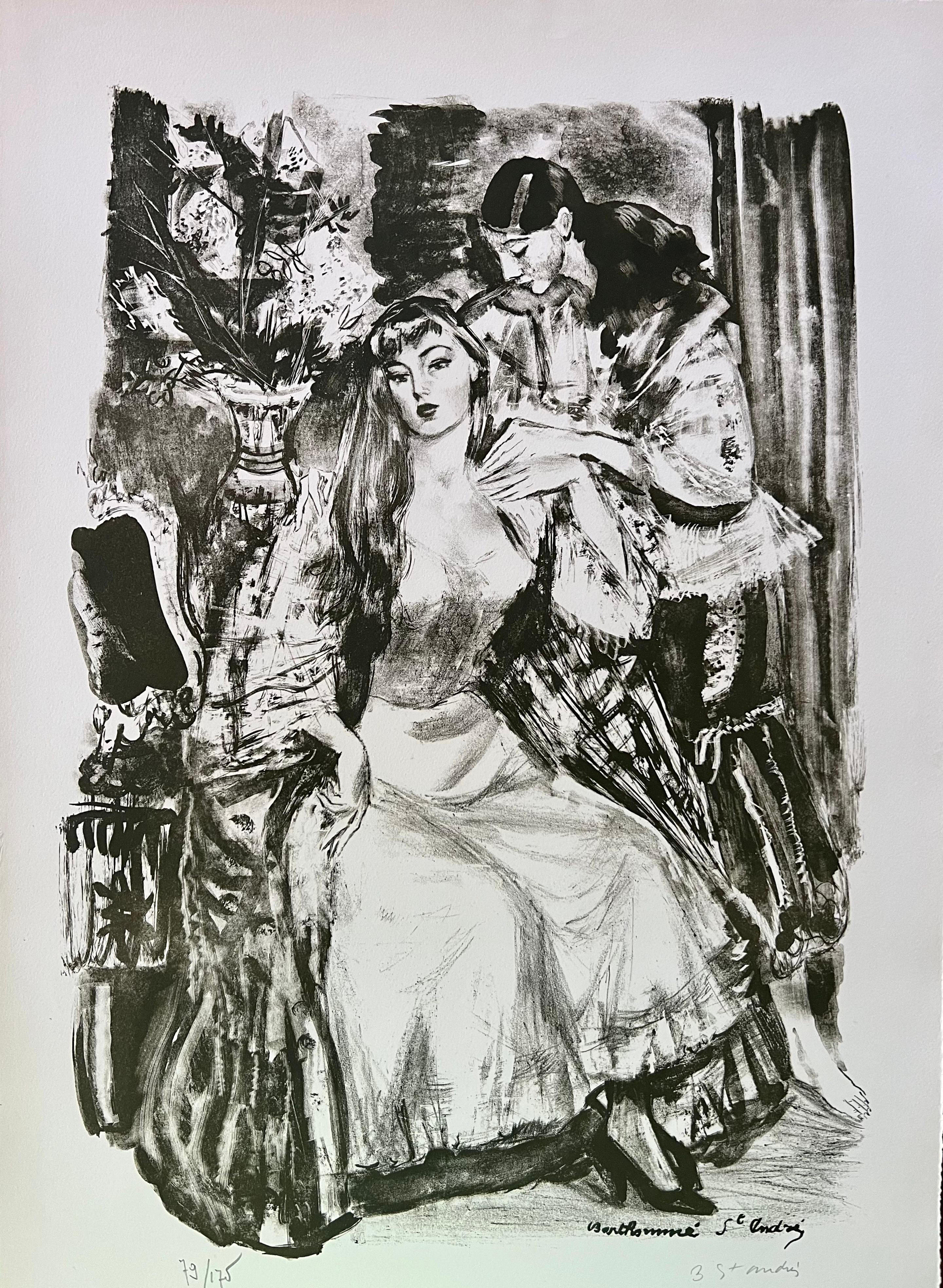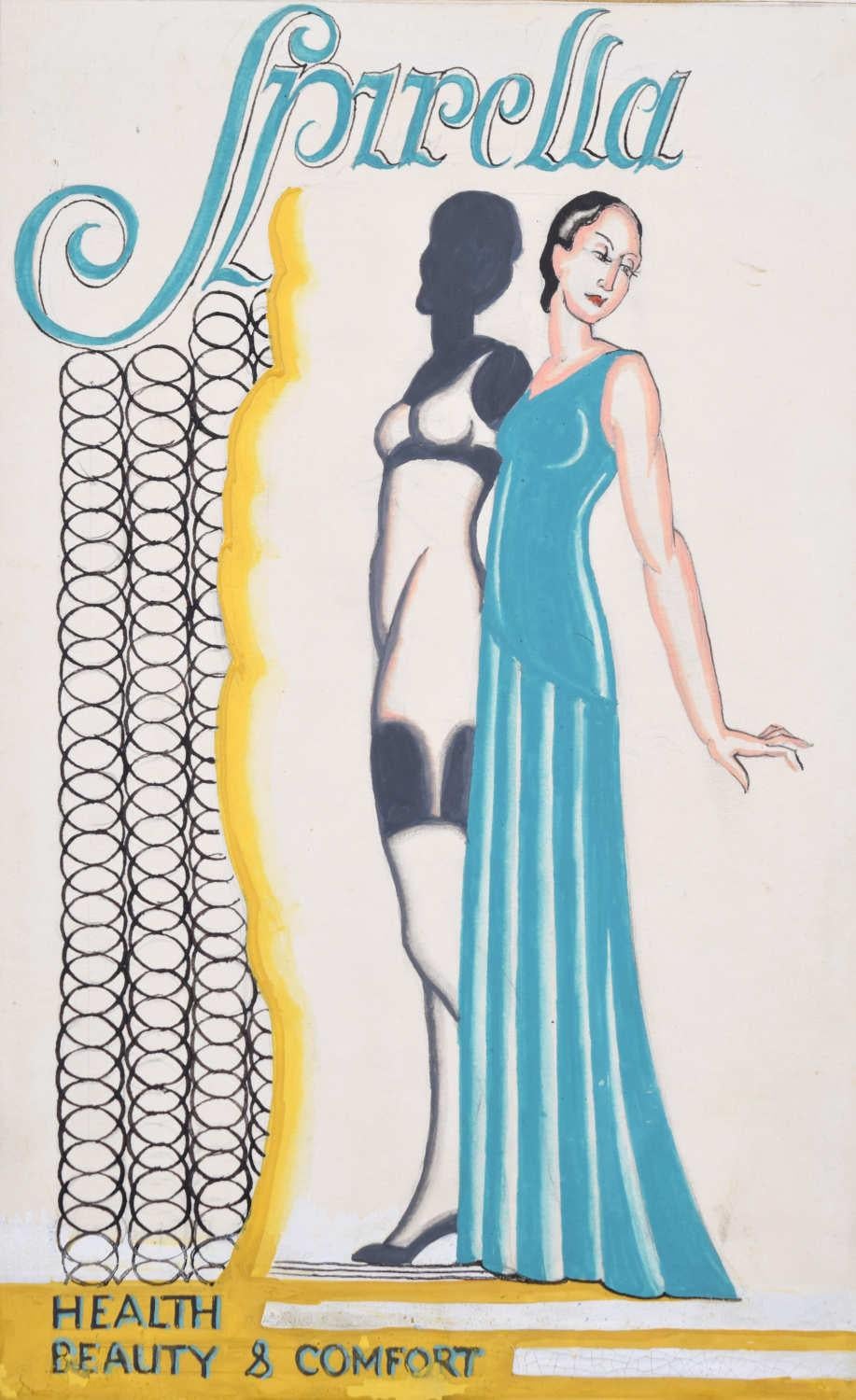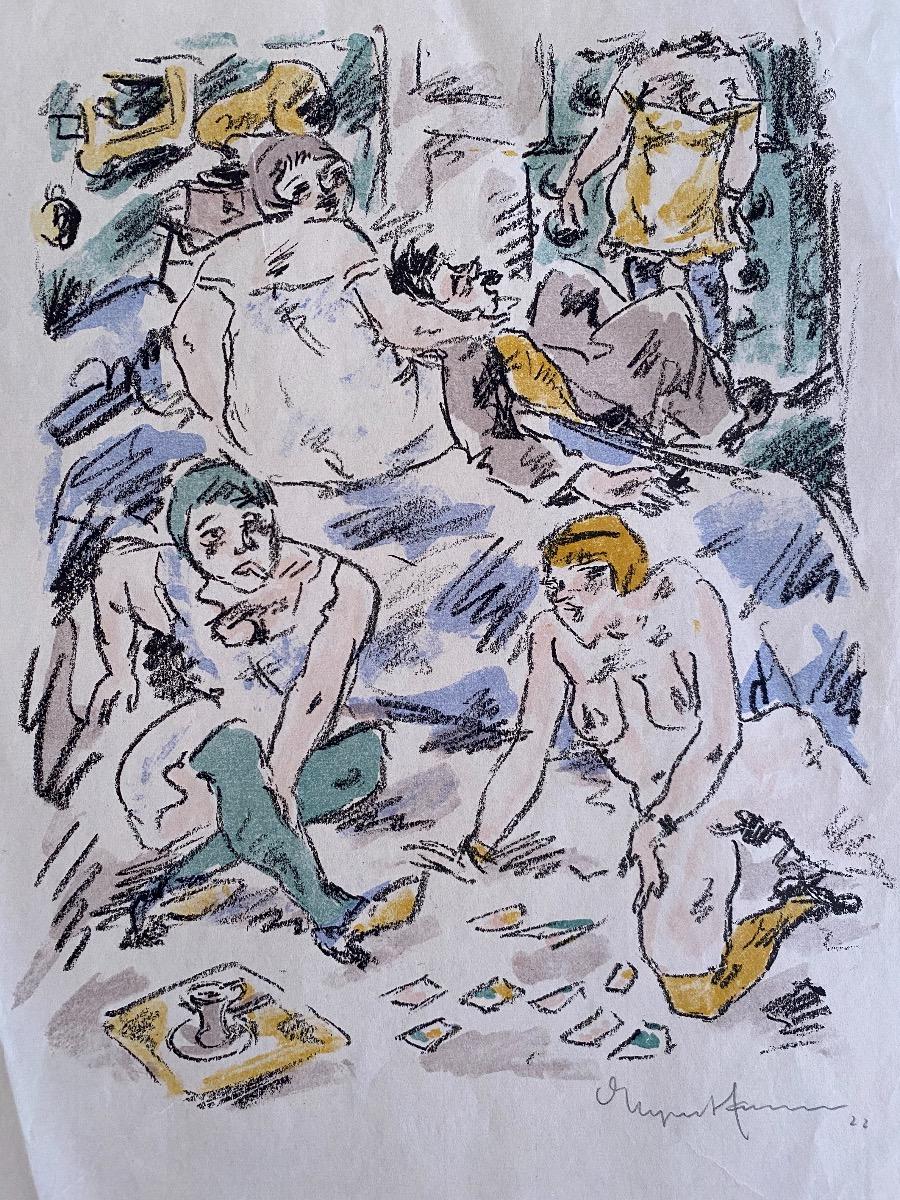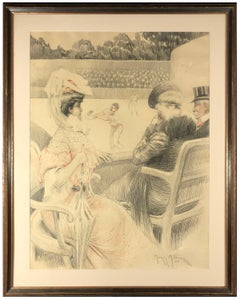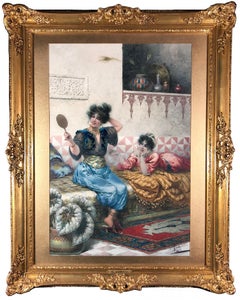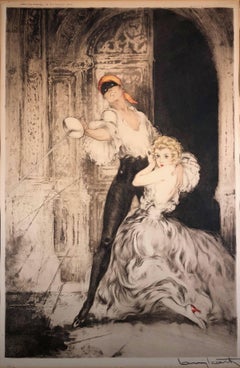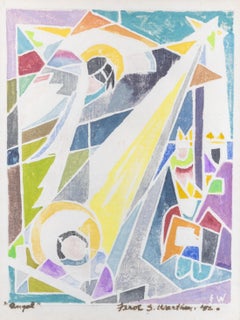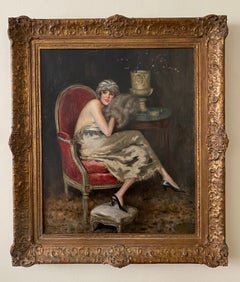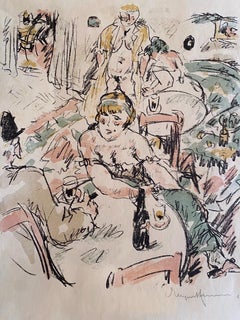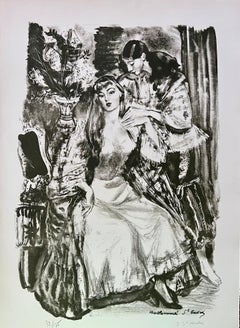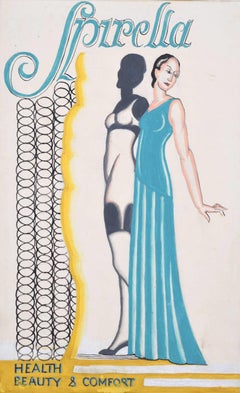Items Similar to In the Boudoir
Want more images or videos?
Request additional images or videos from the seller
1 of 6
William AblettIn the Boudoirc. 1920s
c. 1920s
Price Upon Request
Price Upon Request
Price Upon Request
Price Upon Request
Price Upon Request
Price Upon Request
Price Upon Request
Price Upon Request
Price Upon Request
Price Upon Request
About the Item
Aquating Engraving
Image Size: Approx 19 x 15.5
Framed Size: Approx. 28.5 x 24.5
William Albert Ablett (1877 - 1937)
Although born to English parents, William Ablett lived in Paris, France where he studied at the Ecole des Beaux-Arts under Aublet and Grome and exhibited at the Salons. He was made a Chevalier of the Legion d'Honneur and also a member of the Royal Academy in London.
In the 1920s, William Ablett put his classical training at the service of creating boudoir prints of fashionable Art Deco ladies, and it is for these images that he is best remembered today. His interpretation of the modern French woman became the hallmark of the "Boudoir" style of art. His vision of the Art Deco lady, combined with his technical excellence, resulted in an extremely desirable and popular oeuvre. His reputation as one of the finest artists of this genre remains unchallenged to this day.
- Creator:William Ablett (1877 - 1937, British)
- Creation Year:c. 1920s
- Dimensions:Height: 28.5 in (72.39 cm)Width: 24.5 in (62.23 cm)
- Medium:
- Movement & Style:
- Period:
- Condition:Please email or call if you have any questions or need more detailed images.
- Gallery Location:Missouri, MO
- Reference Number:1stDibs: LU74732243843
About the Seller
5.0
Vetted Professional Seller
Every seller passes strict standards for authenticity and reliability
Established in 1970
1stDibs seller since 2017
156 sales on 1stDibs
Typical response time: Several days
- ShippingRetrieving quote...Shipping from: Missouri, MO
- Return Policy
More From This Seller
View AllA Close Competition
By Maurice Milliere
Located in Missouri, MO
Maurice Milliere (1871-1946)
"A Close Competition" 1905
Colored Pencil on Paper
Signed and Dated Lower Left
Site: approx. 35 x 36 inches
Framed: approx. 43 x 35 inches
Born at Le Havre in Normandy on 12th December 1871, Millière began his art education in his home town but soon transferred to l'Ecole des Beaux-Arts in Paris, where he studied portraiture, life drawing and figure painting in the atelier of Leon Bonnat, whose pupils included Toulouse-Lautrec and Raoul Dufy. He also studied at l'Ecole des Arts Decoratifs. His skill as a draughtsman translated quickly into success as a cartoonist and illustrator and his brilliant interpretation of the "Modern Parisienne" soon became known as the "Petite femme...
Category
Early 1900s Art Nouveau Figurative Drawings and Watercolors
Materials
Paper, Color Pencil
Price Upon Request
An Opulent Evening
By Guiseppe Aureli
Located in Missouri, MO
Guiseppe Aureli (1858-1929)
"An Opulent Evening" c. 1880s
Watercolor on Paper
Signed Lower Right
Site Size: approx. 30 x 20 inches
Framed Size: approx. 37 x 29 inches
Giuseppe Aureli (December 5, 1858 in Rome – 1929) was an Italian painter and watercolorist. His work is noted for its historical subject matter, portraits of Italian noble families as well as genre paintings and local scenes, especially work with Oriental themes.
He received his early art education at the Academia de San Luca where he was the pupil of Pietro Gabarini and Cesare Maccari.[1] He exhibited in various exhibitions; including: The International Exhibition of 1888 in Munich and the World Fair of 1893 in Chicago, but his Oriental works were rarely included in these early exhibitions. Having his workshop at 48 Via Margutta in Rome, Aureli was in a position to exchange ideas with the most prolific Orientalist artists at that the time. He used the same staircase that led to a rabbit-warren of studios including those of Filippo Bartolini, Enrico Tarenghi...
Category
Late 19th Century Victorian Figurative Drawings and Watercolors
Materials
Watercolor, Laid Paper
Price Upon Request
Don Juan
By Louis Icart
Located in Missouri, MO
Aquating Engraving
Image Size: approx. 20 1/4 x 13 3/8
Framed Size: 28 x 20.5 inches
Pencil Signed Lower Right
Louis Justin Laurent Icart was born in Toulouse in 1890 and died in Paris in 1950. He lived in New York City in the 1920s, where he became known for his Art-Deco color etchings of glamourous women.
He was first son of Jean and Elisabeth Icart and was officially named Louis Justin Laurent Icart. The use of his initials L.I. would be sufficient in this household. Therefore, from the moment of his birth he was dubbed 'Helli'. The Icart family lived modestly in a small brick home on rue Traversière-de-la-balance, in the culturally rich Southern French city of Toulouse, which was the home of many prominent writers and artists, the most famous being Henri de Toulouse-Lautrec.
Icart entered the l'Ecole Superieure de Commerce de Toulouse in order to continue his studies for a career in business, particularly banking (his father's profession). However, he soon discovered the play writings of Victor Hugo (1802-1885), which were to change the course of his life. Icart borrowed whatever books he could find by Hugo at the Toulouse library, devouring the tales, rich in both romantic imagery and the dilemmas of the human condition. It was through Icart's love of the theater that he developed a taste for all the arts, though the urge to paint was not as yet as strong for him as the urge to act.
It was not until his move to Paris in 1907 that Icart would concentrate on painting, drawing and the production of countless beautiful etchings, which have served (more than the other mediums) to indelibly preserve his name in twentieth century art history.
Art Deco, a term coined at the 1925 Paris Exposition des Arts Decoratifs, had taken its grip on the Paris of the 1920s. By the late 1920s Icart, working for both publications and major fashion and design studios, had become very successful, both artistically and financially. His etchings reached their height of brilliance in this era of Art Deco, and Icart had become the symbol of the epoch. Yet, although Icart has created for us a picture of Paris and New York life in the 1920s and 1930s, he worked in his own style, derived principally from the study of eighteenth-century French masters such as Jean Antoine Watteau, François Boucher and Jean Honoré Fragonard.
In Icart's drawings, one sees the Impressionists Degas...
Category
1920s Art Deco Figurative Prints
Materials
Engraving, Aquatint
$2,800 Sale Price
20% Off
Angel
Located in Missouri, MO
Angel, 1952
Ferol K. Sibley Warthen (American, 1890-1986)
Color Woodblock Print
6.5 x 5 inches
16 x 13.75 inches with frame
Signed Lower Right
Titled Lower Left
Born 1890, Died 1986...
Category
1950s American Modern Abstract Prints
Materials
Color
Ornaments
Located in Missouri, MO
Ornaments, 1953
Ferol K. Sibley Warthen (American, 1890-1986)
Color Woodblock Print
7 x 4.75 inches
16 x 13.75 inches with frame
Signed and Dated Lower Right
Titled Lower Left
Born 1890, Died 1986...
Category
1950s American Modern Abstract Prints
Materials
Color
In the Boudoir
By Delphin Enjolras
Located in Missouri, MO
Delphin Enjolras
"In the Boudoir"
Oil on Canvas
Signed Lower Left
Canvas: approx 29 x 22 inches
Framed: approx. 37 x 30 inches
Renowned as a portraitist of the upper echelons of s...
Category
Early 20th Century Academic Figurative Paintings
Materials
Canvas, Oil
Price Upon Request
You May Also Like
Elegant with Muff
By William Ablett
Located in Los Angeles, CA
William Ablett was born in Paris of English parents. He was accepted at the prestigious Ecole des Beaux-Arts and began working in oils. Under the tutelage of his professors and mento...
Category
1920s Art Deco Figurative Paintings
Materials
Oil
In the Brothel - Original Lithograph by Eugen Hamm - 1922
Located in Roma, IT
In the Brothel is an original lithograph realized by Eugen Hamm in 1922.
In good conditions.
This artwork represents a brothel with several nude women.
H...
Category
1920s Expressionist Figurative Prints
Materials
Lithograph
untitled woman in boudoir original lithograph
By Louis Berthomme Saint-Andre
Located in Belgrade, MT
This lithograph is part of my private collection and in very good condition. It is original, numbered and signed by the artist in the plate and on the print. Guilde de la Gravure.
Category
Mid-20th Century Post-Impressionist Figurative Prints
Materials
Oil, Lithograph
Spirella, Health, Beauty & Comfort, vintage illustration by A. E. Halliwell
Located in London, GB
A. E. Halliwell (1905-1987)
Spirella, Health, Beauty & Comfort
Gouache
26 x 15 cm
Provenance: Family of the artist
A.E. Halliwell (1905–1986) was a British artist, illustrator, a...
Category
1930s Art Deco Figurative Paintings
Materials
Ballpoint Pen
In the Brothel - Lithograph by Eugen Hamm - 1922
Located in Roma, IT
In the Brothel is an original lithograph realized by Eugen Hamm, a german expressionist artist, in 1922.
Good conditions, with some minor ...
Category
1920s Expressionist Figurative Prints
Materials
Lithograph
Study for Marjanah
By Alexander Oscar Levy
Located in Buffalo, NY
A beautiful art deco portrait by well listed American Ashcan School artist Alexander Oscar Levy. This piece was featured in the American Art Review article about the Levy retrospect...
Category
1920s Art Deco Figurative Paintings
Materials
Board, Oil
$11,200 Sale Price
20% Off
More Ways To Browse
Antique Boudoir
Boudoir Art
Art Deco Engraving
Art Deco Boudoir
Mr Brainwash Happy Birthday
Mucha Hamlet
Mucha Salon Des Cent
Murakami Champagne Supernova
Oldrich Kulhanek
Otto Kuhler On Sale
Pablo Picasso Etching 1966
Pablo Picasso La Ronde De La Jeunesse
Pablo Picasso Serie
Pablo Picasso Serigraph
Pamela Bianco
Paolo Toschi
Paris Street Scene Lithograph
Paul Stewart
